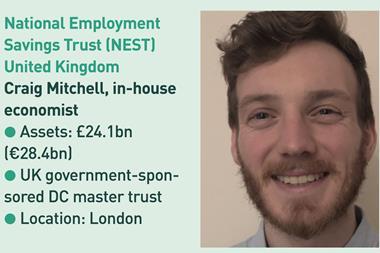Private equity returns are at near-record levels, with 42% of limited partners (LPs) now reporting portfolio-lifetime annual returns of over 16% net, according to Coller Capital’s latest Global Private Equity Barometer.
Coller Capital, which invests in the secondary market for private assets, said this percentage had been exceeded only once in the 18 years the barometer has been published, namely in 2007, just before the global financial crisis.
Furthermore, 94% of LPs reported net annual returns of 11% or more since the inception of their private equity portfolios.
The Barometer, the 35th of a bi-annual series, is based on the views of 110 private equity investors based in Europe, North America, and Asia Pacific including the Middle East, with research undertaken during February and March 2022.
The survey found that over half – 54% – of LPs have increased their target allocations to private equity in the past two years, with only 10% reducing allocations.
ESG as adding value
It also showed there now appears to be a consensus around what matters in terms of ESG investing.
Almost two-thirds – 65% – of investors said that ESG adds value by the proactive implementation of change in underlying companies, while excluding high-risk investments or industries.
Hani El-Khoury, partner at Coller Capital, said: “With private equity, you have hands-on stakeholders, pushing the ESG agenda. However, while Europe is at the forefront, the gap between that region and the rest of the world is slightly surprising.”
Indeed, in the past five years, 64% of European investors had increased the number of industry sectors they exclude for ESG reasons, while only 24% in Asia-Pacific and 23% in North America had done so.
Meanwhile, only 4% of LPs have so far asked their general partners (GPs) to adopt the Science-Based Targets initiative (SBTi) in measuring and reporting environmental impacts in their portfolios. But 65% of investors based in Europe, 45% in Asia-Pacific and 23% in North America, said they are likely to make this request in the next few years.
In terms of gender and ethnicity, North American LPs are leading the way.
Over half have made, or expect to make, commitments to venture capital funds investing significantly or exclusively in businesses with female or ethnic minority founders, compared with around one-third of European and Asia-Pacific LPs.
“The topic has become more important for private equity funds as they recognise that diversity may lead to better value creation,” said El-Khoury. “The US venture market is more developed than elsewhere in this respect.”
Crypto, metaverse views
The survey found that only 19% of LPs are committed (or plan to commit) to funds that invest using cryptocurrencies, while 81% do not see themselves ever doing this; this includes 44% who have made a policy decision to exclude cryptocurrency investing.
But one-third of LPs are already committed (or plan to commit) to funds that invest in the metaverse, a virtual-reality space in which users can interact with a computer-generated environment and other users.
The competitive market in recruitment continues, with around half of LPs – and over 60% in the Asia-Pacific region – changing their pay scales and/or working conditions to attract talent.
El-Khoury said: “Post-pandemic, the race to attract highly-skilled people has become even more important, which is definitely leading to changes. Besides higher pay, LPs are moving towards, for example, providing more flexibility in working conditions.”
Less positively, one-fifth of European, and a third of North American, investors believe rising interest rates will lead to higher default rates in their private credit portfolios.
But interest in private credit is still very strong, with 39% of LPs looking to increase their allocations in the next 12 months.
“While LPs recognise that there are problems within the current market environment, there is equally the recognition that this could also lead to some interesting opportunities in the private credit space,” El-Khoury told IPE.












